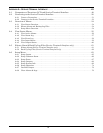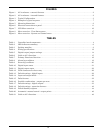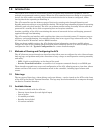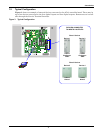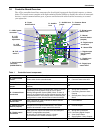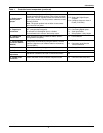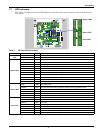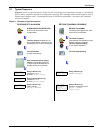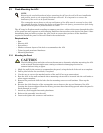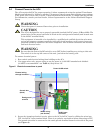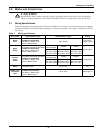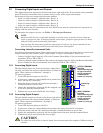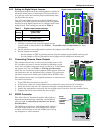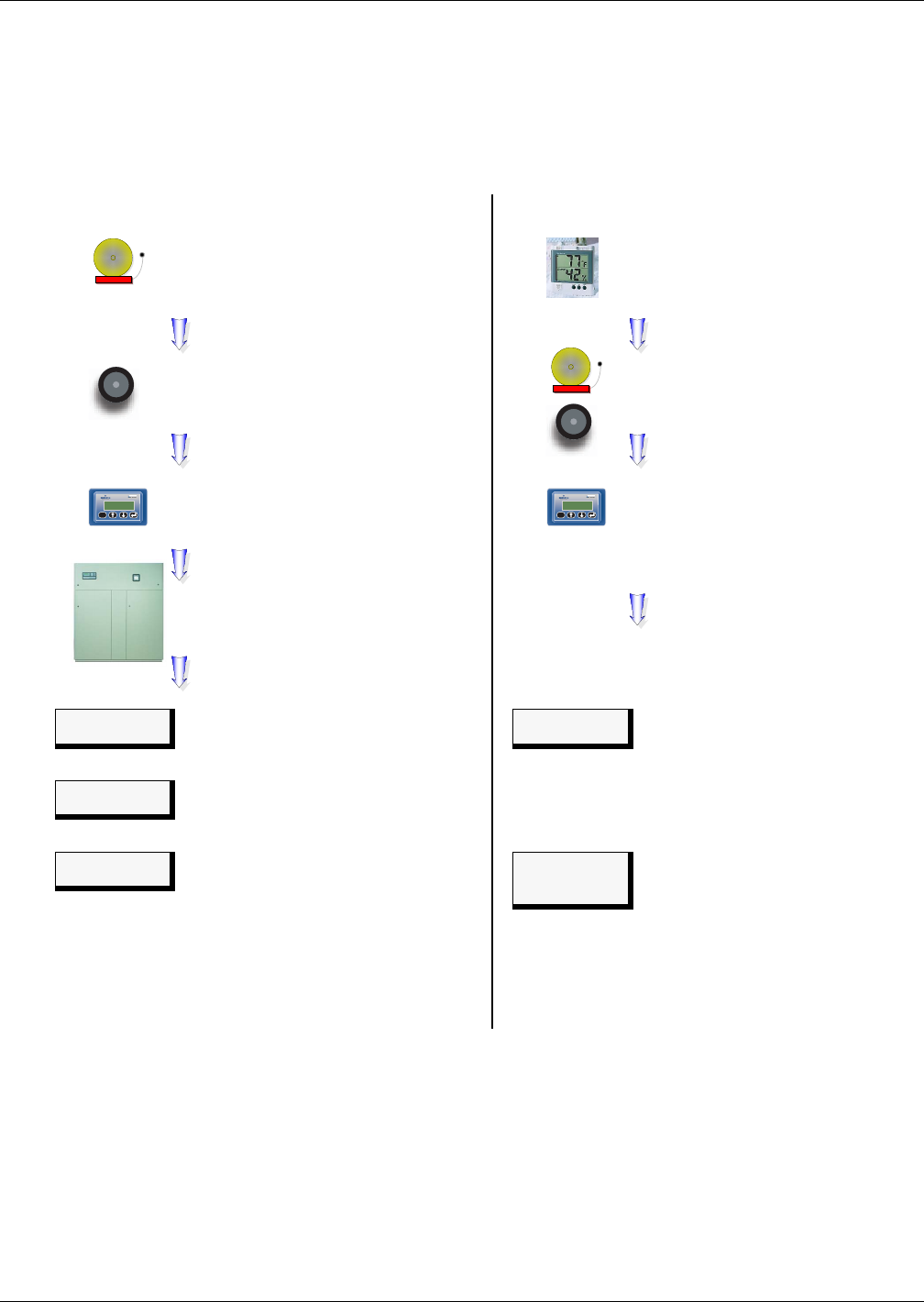
Introduction
7
1.8 Typical Sequence
Figure 4 shows a typical sequence of how the AC4 functions after detecting a change in a monitored
device. Many responses depend on configuration settings. This example shows what happens when a
digital input changes state—assuming the input is defined as alarmable—and when the condition
returns to normal.
Figure 4 Example of typical sequence
ALARMS CLEARED
30-SEP-04 16:24:04
Entry in Alarm Log
(
ALARMS CLEARED)
DEVICE_1 ALARM
CONTACT CLOSED
30-SEP-04 16:23:04
Entry in Alarm Log
Condition (
ALARM)
& state (
CONTACT CLOSED)
The alarm is cleared
(automatically if Unlatched; must be
cleared manually if Latched)
UNIVERSAL MONITOR
05-SEP-02 14:04:13
V5.100.0
PRESS =STATUS/SETUP
ESC
ESC
The LCD stops flashing
RETURN TO NORMAL
The device that triggered the alarm
returns to its normal state.
The horn sounds (audible horn on
the controller board—silence horn by
pressing any key on the LCD keypad)
The LCD flashes
(except during setup)
ALARM CONDITION DETECTED
A device connected to the AC4
changes state.
RESPONSES TO AN ALARM RETURN-TO-NORMAL SEQUENCE
UNIVERSAL MONITOR
05-SEP-02 14:04:13
V5.100.0
PRESS =STATUS/SETUP
ESC
ESC
DEVICE_1 STARTED
DEVICE_2 STARTED
DEVICE_3 STARTED
DEVICE_4 OFF
30-SEP-04 16:24:06
DEVICE_4 STARTED
30-SEP-04 16:23:10
DEVICE_1 ALARM
CONTACT CLOSED
Entry in Event Log
Status change
(
DEVICE_4 STARTED)
Entry in Event Log
Actions in response to event
(DEVICE_1 STARTED,
DEVICE_4 OFF
)
Entry in Active Alarm Log
Condition (
ALARM)
& state (
CONTACT CLOSED)
The horn stops sounding
(if user hasn’t silenced it)
User setup determines output
control (for example, the device
in alarm might be disabled and a
standby device set to operate)



